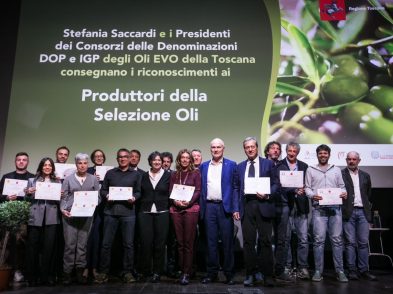Perhaps you’ve heard of the term ‘terroir.’ The French loanword is often translated as a particular set of characteristics—climate, geography, geology, soil, topology, and even human culture—which come together to provide us with a ‘sense of place.’ The term is most often used in the context of winemaking, where the role of terroir is an essential driving force behind the final product. I met with Arezzo-born Luca Martini at his restaurant, Blend4, in Azzate, north of Milan, to learn how the world’s top sommelier conceives of terroir. Martini is one of Italy’s most decorated sommeliers, having won the awards for Best Tuscan Sommelier in 2007, Italian Champion in the Master del Sagrantino and Italian Champion in Dessert Wines and Meditation Wines in 2008, Best Italian Sommelier in 2009 and World’s Best Sommelier in 2013. From our conversation, I think it’s safe to say that Martini deserves his titles in every respect.
Jason Thomas Browe: Entering into a blind tasting, what are you able to understand of terroir? How are you able to understand terroir?
Luca Martini: Terroir only comes into play when you focus on a blind tasting in a single territory. I’ll give you an example. You can understand terroir if you do a tasting of just Barolo, where in a range of samples you’re able to recognize the terroir of Serralunga, of Castiglione Falletto, La Morra, Barolo or Dogliani.
JTB: Because otherwise you’re not talking about terroir, you’re talking about zones?
LM: Of varietals and zones. If you have a glass of sangiovese [the principal grape varietal in Chianti wine], you can understand if the sangiovese comes from Montalcino, Montepulciano or central Tuscany, from Chianti Classico. However, if you’re talking about terroir… the word terroir is a bit misused much of the time. Because in a vineyard you can have 20 types of terroir. In Clos de Vougeot [a large Grand Cru vineyard in the Burgundy wine region], 50 producers make 45 different wines.
JTB: Would you lead me through the steps that you use during a tasting to uncover a wine’s terroir?
LM: Certainly. With this wine here, the first step that we need to visualize is this brilliant color. What does it tell us? The transparency logically transports one right away to guess at a presumed freshness, a great healthiness of the grapes, a brilliance that makes you guess a very cool terrain.
JTB: You can see from the color that this wine comes from a cool terrain?
LM: Exactly. Because it’s a brilliant, vivid color. What’s more, the year was a great year. Because these grapes were very healthy. Normally it might be more opaque or more dull: in a rainy year more dull, more opaque in a very hot year where the pigments suffered the heat of the sun… Moving the wine in the glass you can see how it dances. It designs these arches on the side of the glass, which lead you to guess as to the glycerin ratio and the alcoholic content. Depending on whether the ‘tears’ are more or less colored, you can tell the body, the glycerin level, the dry extract, the structure of the wine. From my point of view, I have 65 percent of the tasting from the visual aspect, 25 percent from the olfactory aspect and 10 percent from the palate, where one has the confirmation. Because everyone thinks that the palate is the most essential thing. But what do you taste on your palate if you put cotton in your nose?
JTB: I thought that the olfactory part was the most important.
LM: The olfactory part is important, very. But you’ll never find a cabernet sauvignon this color. You’ll never find a nerello mascalese with this lightness. And then, after you’ve done 65 percent of your work, you go and search for confirmation… First I search for a confirmation on the nose. If this were a nerello mascalese I’d smell the volcano; if this were nebbiolo I’d smell macerated violets, nail polish; if I had a pinot nero I’d smell wild strawberries, a more charming smell. In this case, I sense a light smell of hay, cherries preserved in alcohol, a taste of the terroir of Montalcino… The palate is characterized by the four senses: sweet, salty, bitter and sour. This light graphite on the finish, this light compactness of terrain, this touch of dry hay, typical of Montalcino, the interaction of the large oak barrels and the small oak barrels: all of this helps you understand straight away in which part of the world you find yourself.
JTB: Tell me, what type of study does it take to become the world’s top sommelier?
LM: Practice. At every competition you start all over again. Our primary objective as sommeliers is to lead others to understand wine and to assure that we’re giving a good education in the world of wine.
For more on Luca Martini, visit www.vigne.com/us/people/view/luca-martini.






